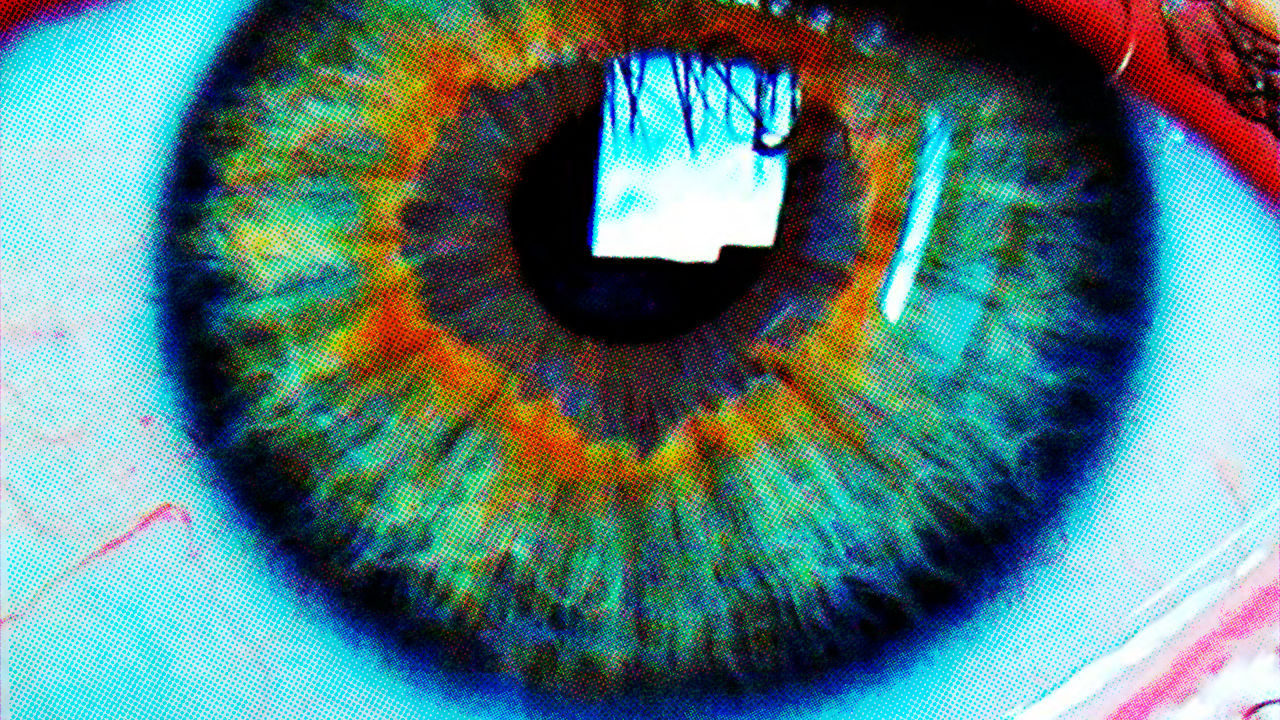Your Next Password Might Be Your Eye
FastCompany
You can use your phone to figure out your heart rate, track how much you walk, and even measure your sex life.
But the powerful sensors inside smartphones can do more than keep you updated on your health: They can also turn your body into a password.
EyeVerify is a small Kansas City–based security company. Its core product is biometric eyescan software for smartphones. Every person has a unique pattern of blood vessels in their eyes. These blood vessels contrast with the whites of the eyes so clearly that they can always be read, even when there's a lack of light. The best part? Those blood-vessel patterns can be photographed by phones and turned into unique data signatures which can be used to replace or supplement traditional passwords. “We turn a picture of your eye into a key that protects your digital identity,” says EyeVerify CEO Toby Rush.
EyeVerify offers their product as a plug-in for different companies; current clients on record include enterprise security firm Fixmo (which has a large sideline business that offers mobile security products to military and government clients) and corporate IT giant AirWatch. The company turns a profit by licensing their technology to outside providers; clients like AirWatch and Fixmo use a software development kit (SDK) and an API to integrate EyeVerify's tech into their own proprietary services. EyeVerify's big goal is expanding its biometrics into spheres like banking and finance; essentially, it's a goal that makes the password as we know it extinct.
Because smartphones have so many sensors compared to conventional desktop and laptop computers, they offer far more opportunities for identity verification. EyeVerify is a member of a small but growing field of companies specializing in mobile biometric identification, and it's a safe bet to say they're an early arrival in a field that will get much more crowded.
According to a report by analyst group Goode
Intelligence, mobile biometrics will generate more than $3 billion in revenue by 2018
and will eventually be adopted by 3.4 billion mobile users worldwide.
Scanning eye capillaries or retinas is one way phones can integrate
biometrics; voice and fingerprint recognition--just like on the new iPhone--are another.
But companies like EyeVerify face a challenge: Users,--whether they're enterprise employees bringing their work data onto a company-supplied Android or ordinary people at home ordering packages off Amazon--generally don't like change. Stopping to have their eyes scanned by a phone, or taking the initial time to have their eyes photographed or analyzed, is a change in routine some may be uncomfortable with. But for app makers, the appeal is obviously there. Biometric identification cuts down on unauthorized use, reduces break-ins, and reduces the risk of intellectual property theft. Although the technology is still in its early stages for smartphones, it is where the industry is going. After all, if Apple has adopted biometrics, others are sure to follow.
But the powerful sensors inside smartphones can do more than keep you updated on your health: They can also turn your body into a password.
EyeVerify is a small Kansas City–based security company. Its core product is biometric eyescan software for smartphones. Every person has a unique pattern of blood vessels in their eyes. These blood vessels contrast with the whites of the eyes so clearly that they can always be read, even when there's a lack of light. The best part? Those blood-vessel patterns can be photographed by phones and turned into unique data signatures which can be used to replace or supplement traditional passwords. “We turn a picture of your eye into a key that protects your digital identity,” says EyeVerify CEO Toby Rush.
EyeVerify offers their product as a plug-in for different companies; current clients on record include enterprise security firm Fixmo (which has a large sideline business that offers mobile security products to military and government clients) and corporate IT giant AirWatch. The company turns a profit by licensing their technology to outside providers; clients like AirWatch and Fixmo use a software development kit (SDK) and an API to integrate EyeVerify's tech into their own proprietary services. EyeVerify's big goal is expanding its biometrics into spheres like banking and finance; essentially, it's a goal that makes the password as we know it extinct.
Because smartphones have so many sensors compared to conventional desktop and laptop computers, they offer far more opportunities for identity verification. EyeVerify is a member of a small but growing field of companies specializing in mobile biometric identification, and it's a safe bet to say they're an early arrival in a field that will get much more crowded.
But companies like EyeVerify face a challenge: Users,--whether they're enterprise employees bringing their work data onto a company-supplied Android or ordinary people at home ordering packages off Amazon--generally don't like change. Stopping to have their eyes scanned by a phone, or taking the initial time to have their eyes photographed or analyzed, is a change in routine some may be uncomfortable with. But for app makers, the appeal is obviously there. Biometric identification cuts down on unauthorized use, reduces break-ins, and reduces the risk of intellectual property theft. Although the technology is still in its early stages for smartphones, it is where the industry is going. After all, if Apple has adopted biometrics, others are sure to follow.

